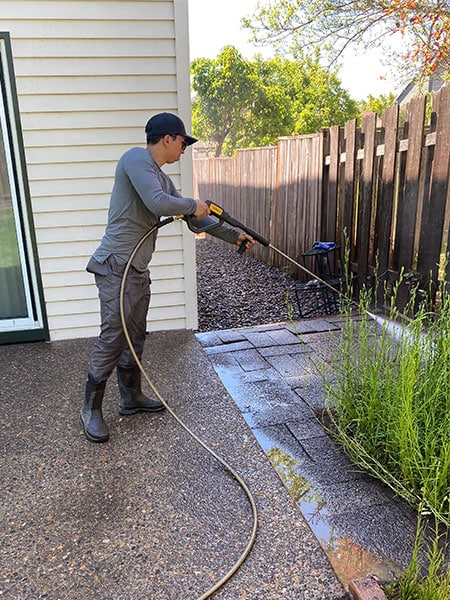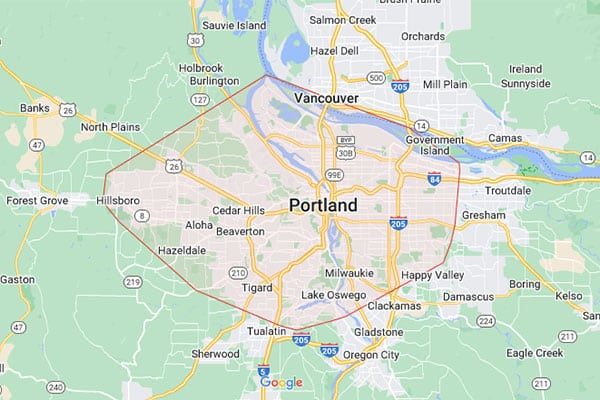Power washing is a highly effective way to clean a variety of surfaces around your home. Whether you’re dealing with a muddy driveway, mold-covered siding, or a grimy deck, power washing can restore these surfaces to their former glory. In this guide, we’ll explore everything you need to know about power washing, from the basics to advanced techniques, to help you get the best results with minimum effort.
Understanding Power Washing Basics
Before diving into the more detailed aspects of power washing, it’s crucial to understand the basics. Power washing uses a high-pressure water spray to remove dirt, grime, mold, and other unwanted materials from surfaces like buildings, vehicles, and concrete. The key components of a power washer include the motor, pump, hose, and nozzle.
Two types of power washing methods often get confused: power washing and pressure washing. The key difference lies in the heating component. While both techniques use high-pressure water, power washing includes hot water, making it more effective at removing tough stains and substances like mold, mildew, and oil. Understanding this distinction can help you choose the right method for your specific needs.
Understanding the importance of water pressure (measured in PSI – pounds per square inch) and water flow rate (measured in GPM – gallons per minute) is essential for effective power washing. Different surfaces require different PSI and GPM settings. For example, a wooden deck can be cleaned with a pressure of 500-600 PSI, while a concrete driveway may need up to 3000 PSI for effective cleaning. More detailed tips can be found in Mi-T-M’s pressure washing guide.
Choosing the Right Power Washer for Your Needs
Not all power washers are created equal. Depending on the job at hand, you might need a different type of power washer. Residential power washers are typically less powerful than commercial ones and come in both electric and gas-powered options. Considerations such as pressure rate (PSI) and water flow rate (GPM) are critical when selecting a power washer.
Electric power washers are generally quieter, lighter, and easier to maintain than their gas-powered counterparts. They are ideal for smaller tasks, such as cleaning patio furniture or washing cars. Gas-powered washers, on the other hand, are more powerful and suitable for larger tasks, including cleaning driveways, siding, and other extensive surfaces.
Another factor to consider is the variety of nozzles available. Different nozzles provide various spray patterns and power levels. A 0-degree nozzle offers a very concentrated stream of water, ideal for tackling tough stains or reaching high areas. However, for general cleaning, a 25 or 40-degree nozzle is often more suitable. For further guidance on selecting the right equipment, check out Wash-N-It’s detailed power washing guide.
Essential Power Washing Safety Tips
Safety should always come first when using a power washer. Always wear protective gear, such as gloves and goggles, to shield yourself from debris and water spray. It’s also important to be aware of your surroundings and keep children and pets away from the area you’re cleaning. Never point the spray gun at people or animals.
It’s essential to familiarize yourself with the safety features and operational guidelines of your power washer before starting any project. Before use, inspect the power washer for any signs of damage, such as cracks in the hose or loose connections. These small steps can prevent accidents and ensure your machine operates smoothly.
Furthermore, be cautious when using power washers near electrical outlets or wiring. To avoid shock hazards, ensure that all electrical components are waterproofed and keep the water spray away from high voltage areas. These practices align with the safety recommendations found in Mi-T-M’s power washing tutorial.
Preparing Surfaces for Power Washing
Proper preparation is essential for effective power washing. Begin by clearing the area of furniture, plants, and other objects that could be in the way. If you’re washing siding or a deck, ensure that windows and doors are closed and sealed. Using a detergent can often help loosen up stubborn dirt and grime.
For surface-specific preparation, it’s crucial to understand the material you’re cleaning. For example, vinyl siding may require a different approach compared to wooden decks. To prevent damage, always spot test in an inconspicuous area before proceeding with the entire surface. For more detailed preparation tips, Wash-N-It provides a thorough guide on preparing for power washing.
When dealing with particularly grimy or moldy surfaces, pre-treating with a suitable detergent can make the cleaning process more effective. Apply the detergent evenly and let it sit for a few minutes, but avoid letting it dry out completely. This step helps break down any stubborn dirt or mold, making it easier for the power washer to do its job efficiently.
Techniques and Tips for Effective Power Washing
To get the best results from your power washing efforts, it’s vital to use the correct techniques. Start by spraying from a distance and gradually move closer to avoid damaging the surface. Utilize a sweeping motion rather than focusing the spray on one spot. Be mindful of the type of surface you’re cleaning, as different surfaces may require different pressure settings.
When cleaning vertical surfaces, work from the bottom up. This technique prevents streaking and allows you to rinse the detergent more effectively. For horizontal surfaces like decks or driveways, use a consistent pattern and overlap each stroke slightly to ensure even cleaning. These strategies can help you achieve professional-level results at home.
Using appropriate detergents can also elevate your power washing game. Some surfaces may benefit from specialized cleaning solutions designed to remove specific types of grime or stains. Always check the manufacturer’s instructions for the recommended products and test them on a small area before full application. Additional techniques and methods can be found in Mi-T-M’s comprehensive power washing guide.
Lastly, always maintain a safe distance from the surface you’re cleaning. Getting too close can result in damage to the material, especially if it’s delicate like wood or vinyl. Typically, a distance of 6-12 inches should be maintained for optimal cleaning without causing harm. Proper nozzle selection can also play a significant role in ensuring effective and safe power washing.
Power Washing Maintenance and Care
Maintaining your power washer is key to its longevity and performance. Regularly check and clean the filters, nozzles, and hose to ensure everything is in good working order. Store your power washer in a dry place during off-seasons and follow the manufacturer’s instructions for winterizing procedures if necessary.
Routine maintenance should also include checking the oil levels in gas-powered models, inspecting the spark plugs, and replacing worn-out parts as needed. This proactive approach keeps your equipment running smoothly and prevents unexpected breakdowns during a project.
Another crucial aspect of maintenance is properly storing your power washer. Drain any remaining water from the hose and pump to prevent freezing and subsequent damage, especially in colder months. Investing in a cover or storing the machine in a sheltered space can significantly extend its life. For additional maintenance tips and guides, refer to our blog’s maintenance section.
Wrap Up: Clean Smarter, Not Harder
Power washing can make a world of difference in the appearance and longevity of your outdoor surfaces. By following the tips and tricks outlined in this guide, you can ensure you’re using your power washer efficiently and effectively. Remember to prioritize safety and maintenance to keep your equipment in top shape. Happy cleaning!












